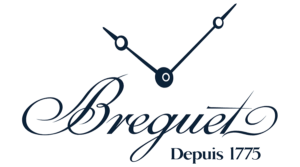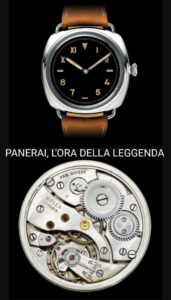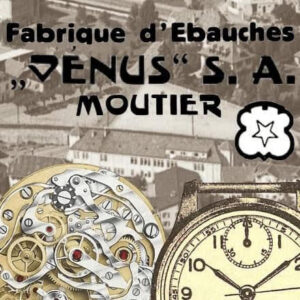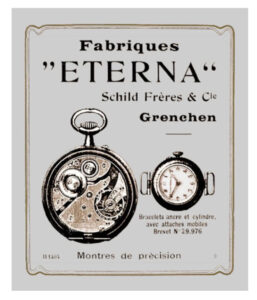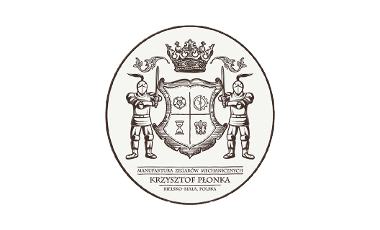BREGUET Nr.160 “Marie-Antoinette”

Piotr Ratynski
August 13, 2023
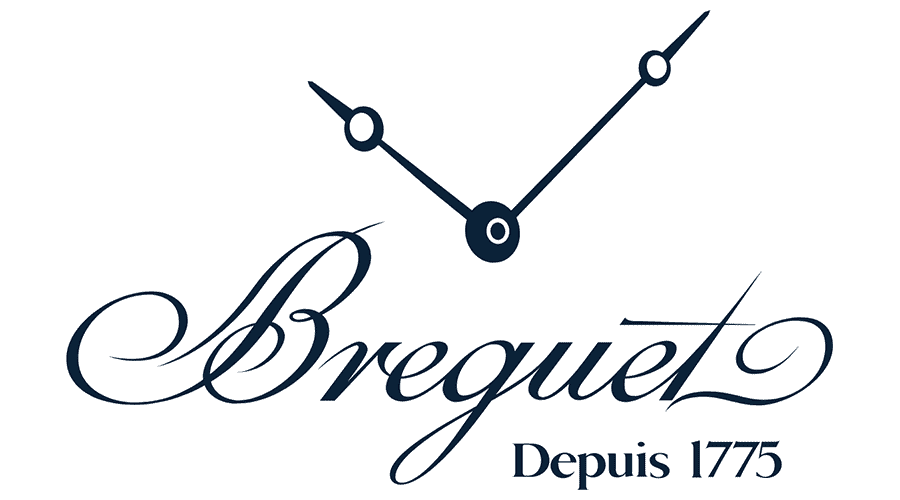
Many experts call it the most important watch ever produced for technological, aesthetic, historical and even emotional reasons. Its history, spanning more than two centuries, could certainly be the subject of a novel or film.
Let’s go back to the end of the 18th century.
Abraham Louis Breguet (1747-1823) was 28 years old when he set up his own watchmaking business on the Île de la Cité in Paris in 1775 and soon amazed with his intelligence and skill. Breguet quickly made a name for himself as one of the most outstanding watchmakers of his time, and within a decade had received commissions from France’s most important aristocratic families and even the French queen. Marie-Antoinette (1755-1793), one of the most enthusiastic admirers of his watches, owned several of the master’s works herself and recommended him to other crowned heads. In 1783, Breguet received a commission, through a member of Marie Antoinette’s Guard, for a special watch to be made as a gift for the queen. It was to include all known complications and functions at the time, and gold was to replace brass wherever possible. There is no time or monetary limit imposed on the order. The name of the contracting officer was to remain unknown, so there is no certainty about his identity. According to legend, it was ordered by the queen herself, but most sources surmise that the watch was ordered by Swedish Count Hans Axel von Fersen (1755-1810), a close friend of the queen who became her lover, as evidenced by the decrypted coded letters they exchanged in the last years of the queen’s life. Axel von Fersen and Marie-Antoinette met when they were both eighteen years old. The queen never received the watch, as she was executed by guillotine at the Place de la Révolution on October 16, 1793. Seventeen years later, von Fersen died during a lynching, at the hands of a Stockholm mob that suspected him of plotting to assassinate Crown Prince Charles Augustus. Nevertheless, throughout the years, the construction of this unique watch – numbered 160 – continued with the exception of seven years, from 1789 to 1795, when Breguet left France going into exile in Switzerland and England, until the political scene in France stabilized. In 1827, 44 years after the original order and 34 years after the Queen’s death, the watch was completed. Unfortunately, Abraham-Louis Breguet died in 1823, so the masterpiece was completed by his son Louis-Antoine. The Breguet No. 160 pocket watch is 63mm in diameter and features a perpetual calendar indicating the day of the week, date and month, a time equation, a repeater punching out minutes, quarters and hours, an independent seconds hand, a jumping hour hand and a thermometer. It is a “perpétuelle,” that is, a watch equipped with a self-winding mechanism, using an all-platinum oscillating weight. Total factory costs, as detailed in the archives, reached an impressive 17,070 francs, far more than any other Breguet watch produced at the time. For comparison, consider that another early pocket watch with a perpetual calendar, the famous No. 92 created for the Duke De Preslin, was sold for the sum of 4800 francs. At this point, both the orderer (whoever he was) and Marie-Antoinette had been dead for years, and the watch was probably sold to a certain Marquis de la Groye of Provins. At least that’s what we can assume. In fact, no record of the sale of the timepiece has survived, we know that in 1838 the watch went to the Breguet workshops given for service by the aforementioned Marquis de la Groye of Provins.
His identity is not clear, as no corresponding profile can be found in the genealogy of the Marquis de la Groye.
This leads to a third hypothesis, who so actually ordered the Breguet watch No. 160. Basically, Breguet’s archives may have contained a misspelling – not that uncommon – in the name of the person who returned the watch to the Breguet factory for repair in 1838. With this assumption, the orderer of the watch in 1783 could have been the French naval minister and marshal Charles Eugène Gabriel de La Croix de Castries (1727-1801) and the one who brought the watch back to Breguet in 1838 could have been his grandson, Marquis Edmond Eugène Philippe Hercule de la Croix (1787-1866). Whatever the truth, the refurbished watch was never requested to be returned, so it remained in Breguet’s hands for several decades. Presented at the 1855 Universal Exhibition and other subsequent editions as Breguet watch No. 160 (no mention of Marie Antoinette), it also caused a sensation thanks to its high value of 30,000 francs!
Finally, in 1887. Breguet No. 160 was sold in Paris to London financier and collector Spencer Brunton (1846-1901), who paid the sum of 600 British pounds, equivalent to about 15,000 francs, half the original valuation, but still an exceptional sum. The sales document signed by Edward Brown describes the watch as “N. 160 Montre dite Montre Perpetuelle” without any mention of Marie-Antoinette. After Spencer Brunton’s death in 1901, the watch was bought by Murray Marx (1840-1918), a Dutch art dealer and collector prominent on London’s literary and artistic scene, who sold it in 1904 to Louis Albert Desoutter (1858-1930), a French watchmaker who settled in London in 1881 and established his own business on Maddox Street a few years later. Years later, the watch was bought by Sir David Salomons, or more precisely Sir David Lionel Goldsmid-Stern-Salomons (1851-1923), a multi-talented scientific author, barrister, baronet of Great Britain, nephew of the first Jewish Lord Mayor of London, and one of the most experienced collectors of Breguet watches. Upon his death in 1925, Salomons left his daughter Vera Bryce (1888-1969) fifty-seven of his Breguet watches, including No. 160 “Marie-Antoinette.” After World War I, Vera moved to Jerusalem and became an active philanthropist. After the death of her professor, Leo Aryeh Mayer, rector of the Hebrew University of Jerusalem, she founded the L.A. Mayer Institute for Islamic Art and donated her precious watches to the museum to be displayed in a special gallery. The LA Mayer Institute for Islamic Art opened to the public in 1974, when Vera was no longer alive. Apparently, Breguet No. 160 has found its home. British master watchmaker George Daniels, one of the brand’s leading experts, had the opportunity to catalog the Breguet watches and clocks in the museum and published a detailed study on them. Unfortunately, number 160 was about to leave its new home. In the spring of 1983, Israeli thief Na’aman Diller, aware of a temporary malfunction in the Islamic Art Institute’s alarm system, planned one of the most famous heists in Israeli history.
He stole 106 watches along with several paintings, and knowing full well that the stolen watches were too well known to sell on the open market, he stored most of the items in safes in Europe and the US before settling in Los Angeles. Police had considered Diller a potential suspect since 1983, but found no evidence. Checking auction houses and contacting collectors around the world didn’t help. Apparently, “Marie Antoinette” and other valuable watches have disappeared. In 2004, when the case was still unsolved and after more than 20 years no one knew what really happened to the original “Marie Antoinette,” Nicolas Hayek – founder of the Swatch group and new owner of the Breguet brand – challenged his watchmakers to build an exact replica of this masterpiece of watchmaking. Recreating such a complicated watch using only ancient documents proved to be a real challenge for the company’s technicians and watchmakers. Original technical drawings in the Breguet Museum archives and a few other photos and descriptions provided the only available information and clues to the watch’s functions and stylistic details. In 2006, the L.A. Mayer Institute for Islamic Art was contacted by Tel Aviv lawyer Hila Efron-Gabai and informed that one of her clients had valuable watches whose existence was revealed by her husband “on his deathbed.” During his battle with cancer, the man confessed to her that he had stolen the items from the museum two decades earlier. The woman lived in the US and wanted to return it to its rightful owner. Nevertheless, she asked to remain anonymous and receive money in return, given the existence of a $2,000,000 reward for anyone who could help solve the case. Through negotiations, the asking price was lowered to $35,000. 53 of the 106 stolen watches were returned to the museum in August 2007. For several months, the museum did not announce the discovery and hid the watches, wondering how to deal with the insurer, which had already paid the contractual indemnity and the non-disclosure agreement signed with the lawyer of the woman who returned the stolen items. However, the mystery soon came to light, and a police investigation led to the discovery of a document of the warehouse where the stolen watches were stored, which showed the name of a woman living in Los Angeles: Nili Shamrat. It was easy for Israeli police to determine that Nili Shamrat was the widow of Na’aman Diller, a notorious thief. After their wedding in 2003, the two traveled to Tel Aviv to store the stolen watches in a safe. A year later, Diller died of cancer. Nili Shamrat was arrested in May 2008. In the following months, police discovered another 43 stolen watches in two bank safes in France. After 25 years, a total of 96 of the 106 watches stolen by Na’aman Diller have been returned to the Institute of Islamic Art. Today the original “Marie Antoinette,” valued at $30 million, is one of the most valuable works on display in L. A. Mayer Institute for Islamic Art, well protected by a sophisticated alarm system and a bulletproof enclosure. During the same period, after four long years of research and reconstruction, the new Marie-Antoinette watch, numbered 1160, was finally presented to the public at Baselworld 2008 by Nicolas Hayek, founder of the Swatch Group. A treasure in its own right, the watch was housed in a precious presentation case carved from the wood of the Versailles oak tree, under which the Queen once rested and which had to be felled after a violent storm. A demonstration of exceptional watchmaking skills, the new Marie-Antoinette perpétuelle, or self-winding, watch features a minute repeater that punches out hours, quarters and minutes on demand, as well as a full perpetual calendar showing the date, day and month at two, six and eight o’clock respectively. At 10 o’clock, a display with a time equation shows the difference between civil and solar time. In the middle, leaping hour and minute hands accompany a large, independent seconds hand, which is the predecessor of the chronograph hand, while at 6 o’clock there is an additional seconds hand. A 48-hour gait reserve indicator and a bimetallic thermometer are placed side by side. The self-winding mechanism of the watch consists of 823 parts and components, all finished with exceptional care. The plates, bridges and levers, every moving part of the mechanism, the calendar and repeater mechanism are made of polished rose gold. The screws are of oxidized and polished steel. All friction points and bearings, are equipped with sapphires. Considered the fifth most complicated watch in the world, Breguet No. 1160 is often displayed in the most prestigious museums. The original Breguet No. 160 “Marie Antoinette” and its contemporary replica, No. 1160, testify to the exceptional genius of the greatest watchmaker of all time, Abraham-Louis Breguet, as well as to the ability of the brand he created to perpetuate over time truly exceptional watchmaking craftsmanship.
And for those who patiently read to the end a collector’s curiosity. Abraham Louis Breguet (1747-1823) is rightly known as the “king of watchmakers and watchmaker of kings.” His watches were so expensive and in such high demand that they were copied and sold by crooks at high prices as “real Breguets.” However, Breguet, who was already famous during his lifetime, found a clever way to protect himself from these crooks. Thanks to this, specialists today can distinguish an authentic Bregut watch from a fake. Breguet constructed a diamond-tipped cutter with which it engraved a tiny signature and mechanism number on the enamel dial of each of its watches. He placed this sign in a different place on each dial. This engraved signature can only be seen with a magnifying glass, and only if the light falls on it at the right angle.
Similar Articles

Contact
Association for the Promotion and Development of Watchmaking
KRS 0000693567

It’s All About Watches Watch Fair © 2023. Do not attempt to Copy. | Privacy Policy | Design and Development: Wiseboost

